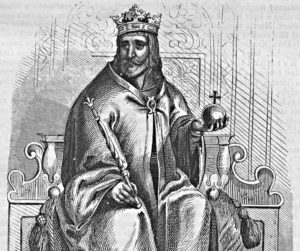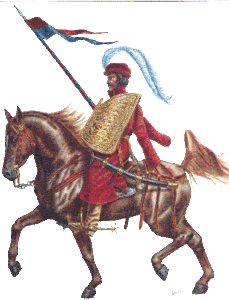9 October 1537 The Austrians’ Mohács

Let us learn more about the disastrous defeat of the Austrians in 1537. This defeat paved the way for peace between the Habsburg King Ferdinand of Western Hungary and King Szapolyai János of Eastern Hungary. It was mainly as a result of this battle that their armistice was signed at Várad in February 1538.

Ferdinand began to realize that he would not be able to swallow the Hungarians in one big chunk, and in February 1537, at the Diet of Pozsony (Bratislava, Pressburg), he made his promise that he would preserve the customs and old laws of Hungary. Soon his new delegation appeared in Istanbul to ask for peace from Sultan Suleiman.

Ferdinand’s men also negotiated the truce with Szapolyai’s trusted man, Brother Martinuzzi György, the “White Monk”, but during the talks, the Austrian king sent his general Leonhard Vels to attack Szapolyai’s lands in Upper Hungary in June. However, Vels’ troops turned back after the unsuccessful siege of Tokaj Castle.

At this point, Ferdinand felt strong enough to send General Katzianer alias Ivan Kacijanar against the Turks in September, read the story of this disastrous campaign below because this defeat was the biggest open-field defeat since the battle of Mohács in 1526.
I am quite sure that the disastrous campaign led to the resumption of talks with Szapolyai in December 1537, which resulted in the armistice of Várad in February 1538, which was kept strictly secret from the ears of Suleiman. Until Ferdinand did not let the information slip out, but I will talk about it later.
I am quite sure that the disastrous campaign led to the resumption of talks with Szapolyai in December 1537, which resulted in the armistice of Várad in February 1538, which was kept strictly secret from the ears of Suleiman. Until Ferdinand did not let the information slip out, but I will talk about it later.

The position of King Ferdinand of Western Hungary was strengthened by 1537. His treaty with King Szapolyai János of Eastern Hungary was almost complete, while the Turks were tied up elsewhere by their enemies. The Habsburg ruler decided the time was right to abandon the defensive strategy he had followed for years. He tried to attack now. He was also motivated by the fact that the Muslims had taken many important fortresses such as Jajca, Klissza, Dubica, and Jeszenovác.

Ferdinand’s army was quite impressive, consisting of Austrian, Bohemian, Hungarian, and Croatian troops, about 25,000 men. While the Sultan’s main army was not there, the king could have even achieved serious success. He had 12,000 infantry, 5,000 heavy cavalry, and 7,000 light cavalry. They hadn’t sent such a large army against the Ottomans in Hungary since the Battle of Mohács in 1526.

The Christian army was led by Hans Katzianer who had beaten the army of King Szapolyai János at Szinán in 1528 and the army of the Turkish Bey Kászim at Leobersdorf in 1532. Their target now was the castle of Eszék (Osijek) where they could have cut the main line of the Ottoman logistics and thus Slavonia could have gotten some relief.

Katzianer’s army was opposed by the army of the Bey of Szendrő, whose forces were only one-third of the Christians. However, several strategic mistakes and the hesitation of Katzianer gave the advantage to the Turks. Katzianer started the siege of Eszék in September, but he did not bring heavy cannons.

He had to stand idle outside the fortress of Eszék for days. His food was quickly running out, and they could find no provisions in the already devastated area. King Ferdinand hadn’t bothered to send them supplies either. So the troops, weakened by hunger and decimated by epidemics, began their retreat quite late, at the end of September. The Turkish army was on their heels.

The army trudged along the untrodden roads of Slavonia. Bakics Pál, Duke of Serbia, the best Serbian raider of the army, was killed in an attack, his head was sent to Constantinapolis. So Katzianer lost one of his best leaders. They left their cannons and baggage behind on October 9th and fled. Katzianer left the army just before the day of the final battle, at night.
The Turks pursued the Christian army and surrounded it near Diakóvár and Garja (Gara).
The Turks pursued the Christian army and surrounded it near Diakóvár and Garja (Gara).

The remaining two officers, Albert of Schlick and Johann of Ungnad followed the example of Katzianer with their troops during the battle. They left the heroically fighting Hungarian and Croatian cavalry behind. Their resistance was soon broken, most of them died and the rest were captured.

Drawing: Velimir Vuksic
The news of the defeat reached Vienna on October 16, where they began to refer to it as the “Mohács of the Austrians”.
The king had Katzianer imprisoned, who tried in vain to wash himself clean. Soon Katzianer escaped from prison (my remark: by digging himself out with a chisel through the bricks of his prison) and went to the side of King Szapolyai János in Slavonia, where he tried to organize people around him (my remark: to support Szapolyai.) Soon he visited the Croatian Zrínyi Miklós (Nikola Šubić Zrinski) and stayed in his castle as a guest, but he paid for it with his life.
The king had Katzianer imprisoned, who tried in vain to wash himself clean. Soon Katzianer escaped from prison (my remark: by digging himself out with a chisel through the bricks of his prison) and went to the side of King Szapolyai János in Slavonia, where he tried to organize people around him (my remark: to support Szapolyai.) Soon he visited the Croatian Zrínyi Miklós (Nikola Šubić Zrinski) and stayed in his castle as a guest, but he paid for it with his life.

The death of Katzianer
There was a blood reward on Katzianer, but he went to the Zrínyi castle in 1539, where he tried to persuade Zrínyi and his brother to side with Szapolyai.

King Ferdinand found out about this and first protested to Zrínyi about the hiding of the fugitive. In June 1539, he started to negotiate with Zrínyi through the Croatian commander-in-chief Jurisich Miklós, the former defender of the castle of Kőszeg, to “eliminate” Katzianer. In return, he promised the Zrínyi family the so-called Korbávian inheritance and the possessions of the Vrana Priory, as well as royal pardon for “any crime” they might have committed. In July 1539, with Jurisich’s active participation, the court and the Zrínyi brothers reached a successful agreement.

The murder probably took place at the end of October 1539 in the castle of Kosztajnica. In 1541, the king had granted the Zrínyis considerable estates, including the Slavonian castles that had been donated to Katzianer, and in a charter of 1542, he described the elimination of Katzianer as “a salutary event both for the country and for Christianity”, who, according to Ferdinand, was trying not only to hand over Slavonian castles to the Ottomans but also to kill Zrínyi.

In his book, the historian Varga Szabolcs also concludes that the Kosztajnica murder could have served as an example for the murder of Friar György in Alvinc in 1551, because, as he says: “It seems that this is how Ferdinand liked to solve delicate matters”. For King Ferdinand himself, political murder could have been a last resort, as he had previously sent an assassin to Szapolyai, who killed the assassin with his own hands. We know that it was Forgách Ferenc, Zrínyi’s enemy, who wrote this story in his chronicles, accusing Zrínyi of having killed Katzianer because of the large amount of money he was carrying.

However, in the chronicles of Forstall (a friend of Zrínyi), we can read a different version, according to which Zrínyi was angry because Katzianer wanted to side with the Turks, and at night he summoned him and cut him down with two great blows and then sent his head to Ferdinand. He added that Ferdinand gave Katzianer’s property to Zrínyi’s children as a reward.
Others say that Zrínyi ordered two of his men to kill him and then they threw his body out of the window. Nevertheless, killing a guest did not help Zrínyi’s reputation.
Others say that Zrínyi ordered two of his men to kill him and then they threw his body out of the window. Nevertheless, killing a guest did not help Zrínyi’s reputation.

How interesting that the murder of political assassins such as Brother György (Martinuzzi), Katzianer, or Istvánffy István would not have stopped the careers of the assassins (Castaldo, Zrínyi and Nádasdy Tamás), but would even have boosted them.
Source: Szibler Gábor and Csaba Kiss, and Varga Szabolcs: ‘Leónidasz a végvidéken – Zrínyi Miklós (1508-1566.)’ Kronosz K. Pécs-Bp. 2022. 131-137.

Dear Readers, I can only make this content available through small donations or by selling my books or T-shirts.
If you like my writings, please feel free to support me with a coffee here:
You can check out my books on Amazon or Draft2Digital, they are available in hardcover, paperback, or ebook:
https://www.amazon.com/dp/198020490X
or at https://books2read.com/b/boYd81


My work can also be followed and supported on Patreon: Become a Patron!http://Become a Patron!


https://hungarianottomanwars.myspreadshop.com/all

